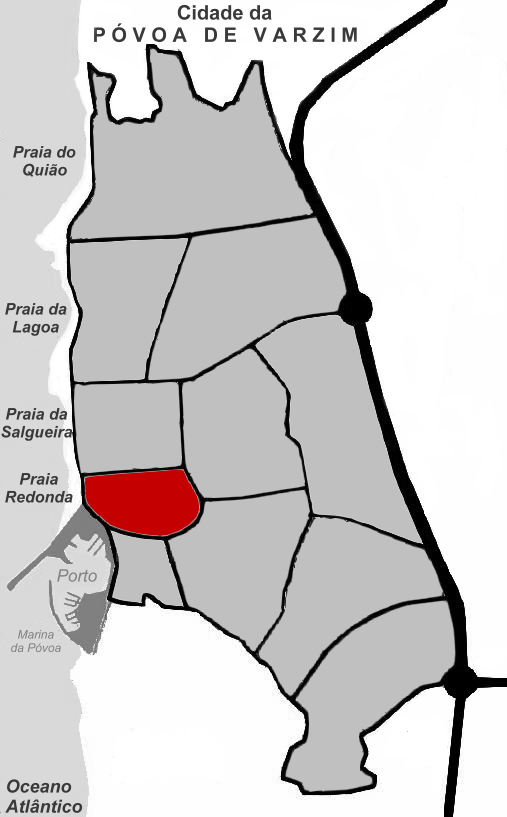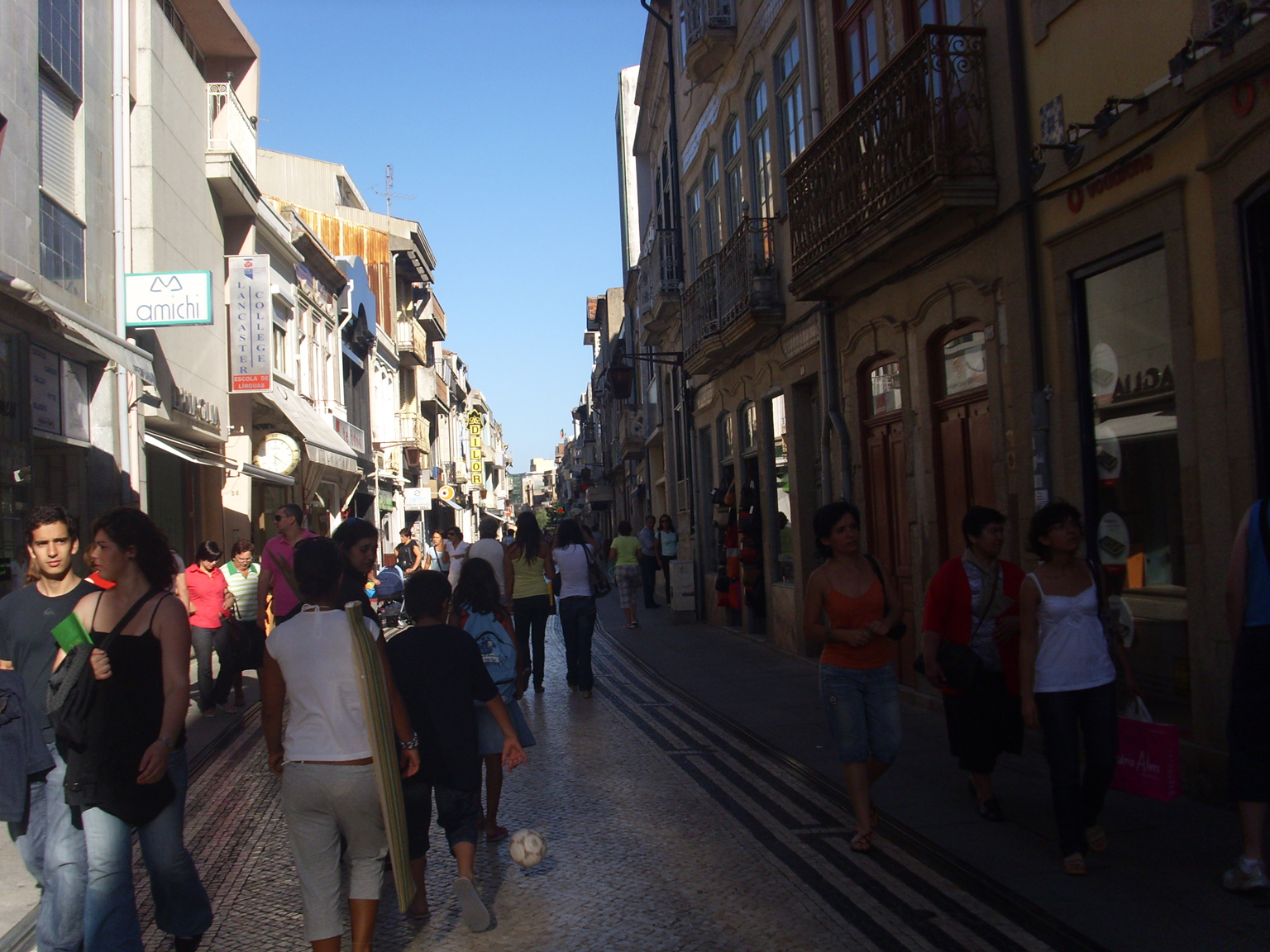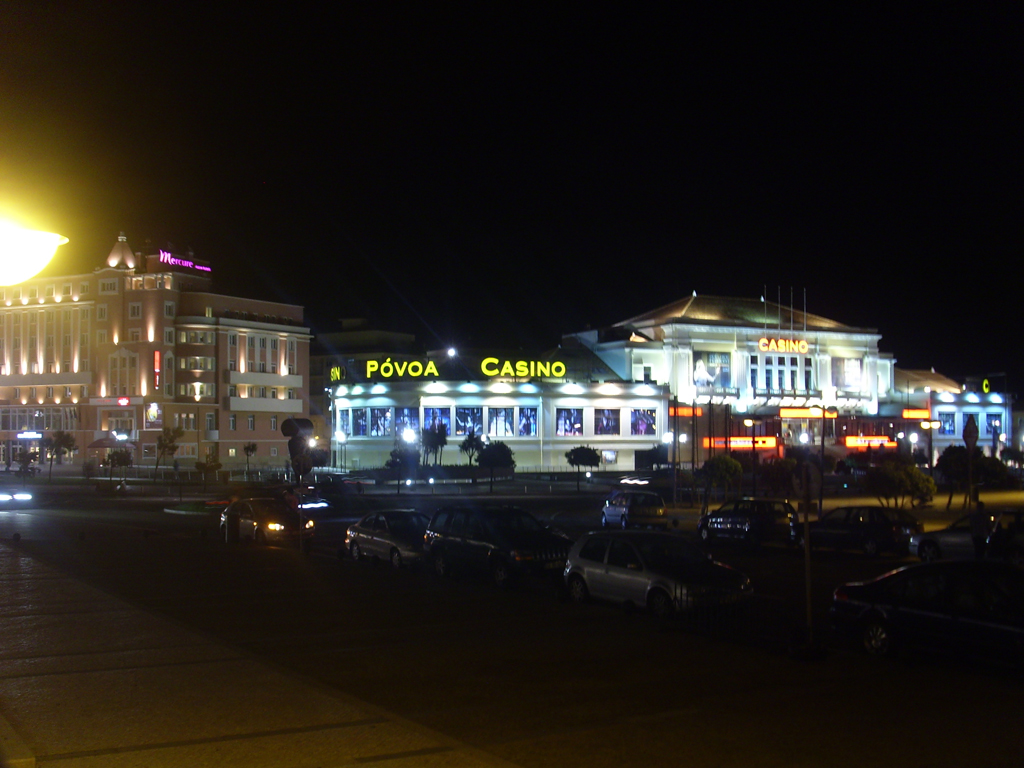Póvoa De Varzim City Center on:
[Wikipedia]
[Google]
[Amazon]
 Póvoa de Varzim City Center or Downtown Póvoa de Varzim (Portuguese, ''Centro'') is the heart of
Póvoa de Varzim City Center or Downtown Póvoa de Varzim (Portuguese, ''Centro'') is the heart of







 Downtown is limited to the North by Bairro Norte, to the south by Bairro Sul, to the east by Barreiros/ Moninhas and Matriz/ Mariadeira and to the west it borders Redonda Beach and Póvoa Cove.
Downtown Póvoa de Varzim is, to a large extent, made up of pedestrian areas, with difficult car access in much of its extension, although underground parking spaces are available in the waterfront and in Avenida Mouzinho de Albuquerque.
Downtown is limited to the North by Bairro Norte, to the south by Bairro Sul, to the east by Barreiros/ Moninhas and Matriz/ Mariadeira and to the west it borders Redonda Beach and Póvoa Cove.
Downtown Póvoa de Varzim is, to a large extent, made up of pedestrian areas, with difficult car access in much of its extension, although underground parking spaces are available in the waterfront and in Avenida Mouzinho de Albuquerque.
- IGESPAR
Póvoa de Varzim
Póvoa de Varzim (, ) is a Portugal, Portuguese city in Norte Region, Portugal, Northern Portugal and sub-region of Greater Porto, from its city centre. It sits in a sandy coastal plain, a cuspate foreland, halfway between the Minho River, Minho ...
in Portugal
Portugal, officially the Portuguese Republic ( pt, República Portuguesa, links=yes ), is a country whose mainland is located on the Iberian Peninsula of Southwestern Europe, and whose territory also includes the Atlantic archipelagos of ...
, and is the location for most of the city's municipal services, tourist attractions and businesses. It is the center, not only for the city or the municipality, but also neighboring municipalities. The greater downtown area also called "Centro" can also include most districts part of Póvoa de Varzim Parish.
Downtown, as defined by the City Hall, is arranged around Praça do Almada 280px, The Pelourinho, the 16th-century town pillory.
The square's plate. The square name honors an 18th-century politician that prompted Póvoa de Varzim's urban development in the late 1700s.
Praça do Almada (Almada's Square) is the civic cent ...
, the civic center, and extends in all directions for a number of blocks, including Junqueira shopping street, Passeio Alegre waterfront square, Mouzinho de Albuquerque business avenue, and Praça Marquês de Pombal (market square). It does not include the medieval and Discovery Age civic center of the city which is located in Bairro da Matriz district.
Despite proven to be occupied at least since the Roman period, Downtown developed its current layout in the 18th century, by royal order of Queen Mary I of Portugal due to the importance that Póvoa de Varzim got as the main seaport in Northern Portugal.
Urban morphology





Civic Center
Praça do Almada 280px, The Pelourinho, the 16th-century town pillory.
The square's plate. The square name honors an 18th-century politician that prompted Póvoa de Varzim's urban development in the late 1700s.
Praça do Almada (Almada's Square) is the civic cent ...
, the civic center, is landscaped in an egg-shape, cut in half by the National Highway 13, and is tipped by buildings with local style. The building of the City Hall (1791) dominates the square. In the square, the Manueline pillory of Póvoa de Varzim (1514) is a national monument and represents Póvoa de Varzim's self-government and laws. Next to the pillory, the romantic gazebo (1904) follows the liking of the old Povoan bourgeoisie for its spare time.Coreto da Praça do Almada- IGESPAR
Junqueira shopping district
Despite being pedestrian, Rua da Junqueira is the most famous and elder of those three streets. Junqueira, which links Praça do Almada to the waterfront, appeared in the written records in 1694, even though artifacts from the Roman era surfaced in diverse street rearrangements and is the site of an ancient Roman fish factory. In 1839, the Town Hall expressed concerns over urbanization issues due to popularity of this street, one of the busiest in Póvoa de Varzim, as it became in that century a full-blown shopping street, identity that it maintained to these days in which ancient stores survive. Undersized but charismatic squares in Junqueira district, between Praça do Almada and Passeio Alegre (waterfront) can be found: Praça da República and Largo David Alves.Old theater area
From the surroundings of Praça do Almada, three parallel streets lead to the waterfront: Rua Tenente Valadim, that ends between the Casino and Grande Hotel, Rua da Junqueira and Rua Santos Minho. The later is related to the arts, most notably performing arts, since the 18th century. It was a square known as Campo das Cobras and the location of a theater since 1793, the local bullfighting arena and circus. The old building Salão Teatro (Theater Saloon) andTeatro Garrett
The Garrett Theatre (Portuguese: ''Teatro Garrett'' or ''Cine-Teatro Garrett'', archaic and original Portuguese naming Theatro Garrett) is a theatre located at Rua José Malgueira Street (former rua da Senra street) in Junqueira quarter, Póvoa de ...
Theater from the 19th century, with small artist's studios in the way, can still be found.
History
Albeit inhabited since the Roman period, with Roman fish factories and a Roman villa. The seaport, a natural harbor, appeared in the written records in the 11th century, and the ship-making industry developed considerably in the 17th century, it was in the 18th century, with the fishing industry getting national importance, that defined the city center as it is today, with the Royal Provision byQueen Mary I
Mary I (18 February 1516 – 17 November 1558), also known as Mary Tudor, and as "Bloody Mary" by her Protestant opponents, was Queen of England and Ireland from July 1553 and Queen of Spain from January 1556 until her death in 1558. Sh ...
on February 21, 1791. The queen ordered ''Corregedor'' Almada to reorganize the town's layout given Póvoa's prosperity and importance in the fishing sector. Prior to development the area had lagoons
A lagoon is a shallow body of water separated from a larger body of water by a narrow landform, such as reefs, barrier islands, barrier peninsulas, or isthmuses. Lagoons are commonly divided into ''coastal lagoons'' (or ''barrier lagoons'') an ...
in the port area such as Boído Lagoon and Galé Lagoon.
The new civic center (''Praça Nova'' - New Square) with a new town hall was built in an area used as a market square during some periods in the site of Boído Lagoon. The square was later renamed Praça do Almada 280px, The Pelourinho, the 16th-century town pillory.
The square's plate. The square name honors an 18th-century politician that prompted Póvoa de Varzim's urban development in the late 1700s.
Praça do Almada (Almada's Square) is the civic cent ...
in honor of Corregedor Almada efforts. The new square replaced the old town hall around Praça Velha
Praça Velha (Old Square), formerly known as Praça (Square), was the primitive civic center and the market square of the city of Póvoa de Varzim in Portugal. It is located in Bairro da Matriz historic district and is surrounded by the main chur ...
, the Old civic center.
Prior to that, Junqueira district was already a bustling fishing quarter. As the 19th century moved in, and beach therapy became popular with the elites, Junqueira became a bourgeois shopping street.
In late 19th century and under the visions of David Alves, when Póvoa de Varzim was already a prosperous beach resort, sections of the urbanized area, which didn't grew in an orderly way, were demolished to give way for Mousinho de Albuquerque Avenue, linking Passeio Alegre Square to uptown's Dores Square (''Largo das Dores''), where mansions for the wealthy beach goers started being built. During late 20th century, some of the mansions and ''Orfeão Poveiro'' music hall ruins were destroyed to give rise to multifamily homes. Despite its losses, Mousinho Avenue got a new character, it became a central business avenue and a rehabilitation program was done in the 21st century.
Around Rego Square, later David Alves square, appeared some of the most charismatic entertainment venues of Póvoa in the 19th century, the Hotel Luso-Brazileiro, the Chinês Saloon, Garrett Theater, and other entertainment venues. Centering the plaza, the Chinês Saloon appeared in 1882 and became popular all over the country and the most famous casino of Póvoa alongside Café David. The elites could listen to music, see shows with Spanish dancers, meet in tertulia
A tertulia (, ; pt, tertúlia ; ca, tertúlia ) is a social gathering with literary or artistic overtones, especially in Iberian Peninsula, Iberia or in Spanish America. Tertulia also means an informal meeting of people to talk about current affa ...
and play roulette.
Old bourgeois area par excellence, with the increasing business importance of Junqueira and Praça do Almada, whose spaces had been taken for tertiary activities such as shops and offices, in such a way that, today, only few people live in the most central areas of the city.As Procissões na Póvoa de Varzim (1900–1950). Volume 1 - Deolinda Carneiro, Faculdade de Letras da Universidade do Porto. 2006
References
{{DEFAULTSORT:Povoa De Varzim City Center Central business districts Geography of Póvoa de Varzim Tourist attractions in Póvoa de Varzim